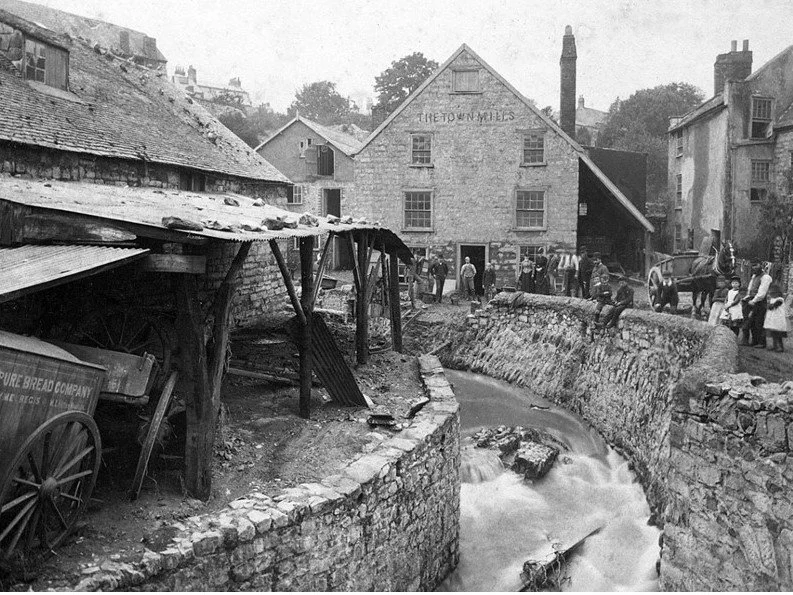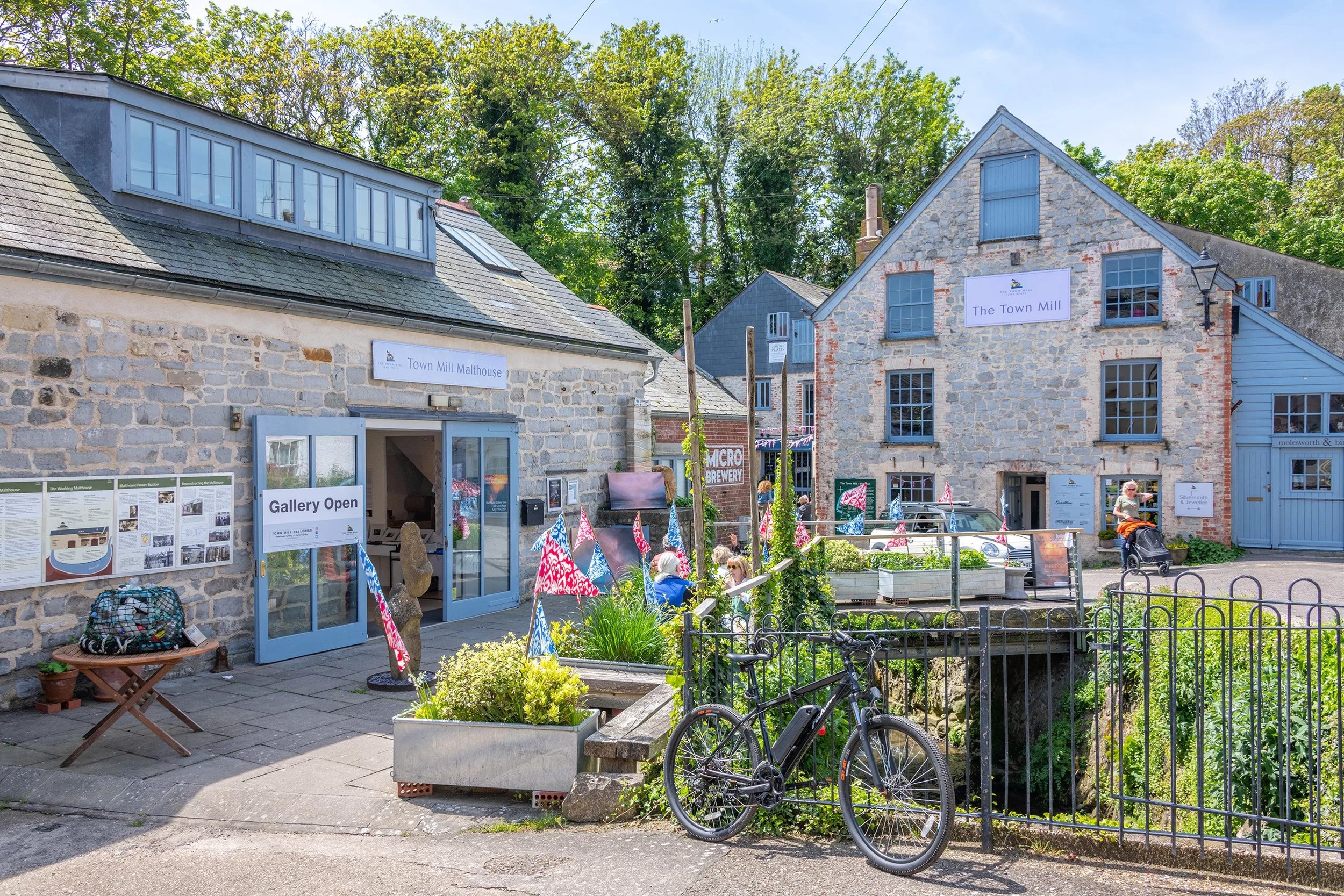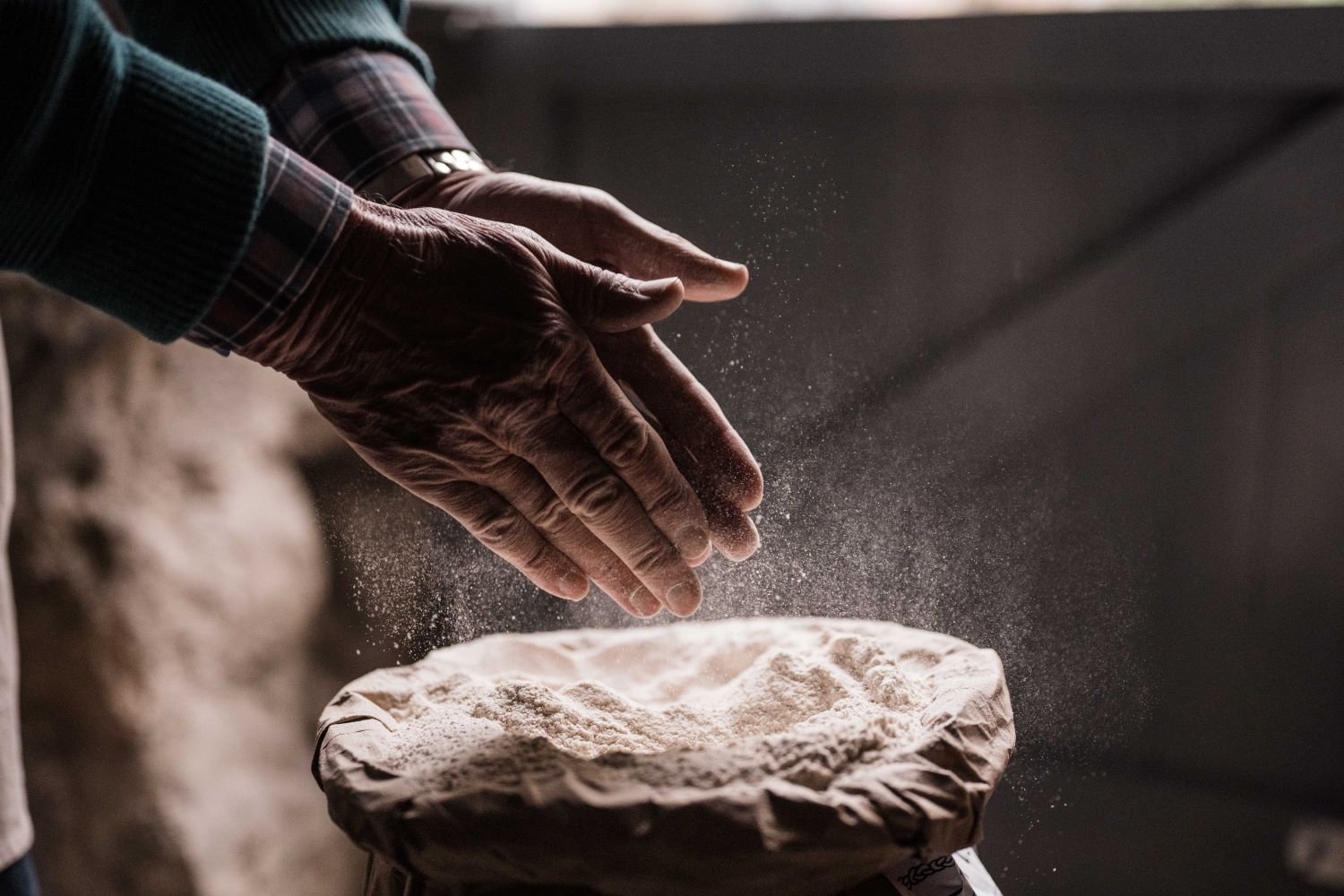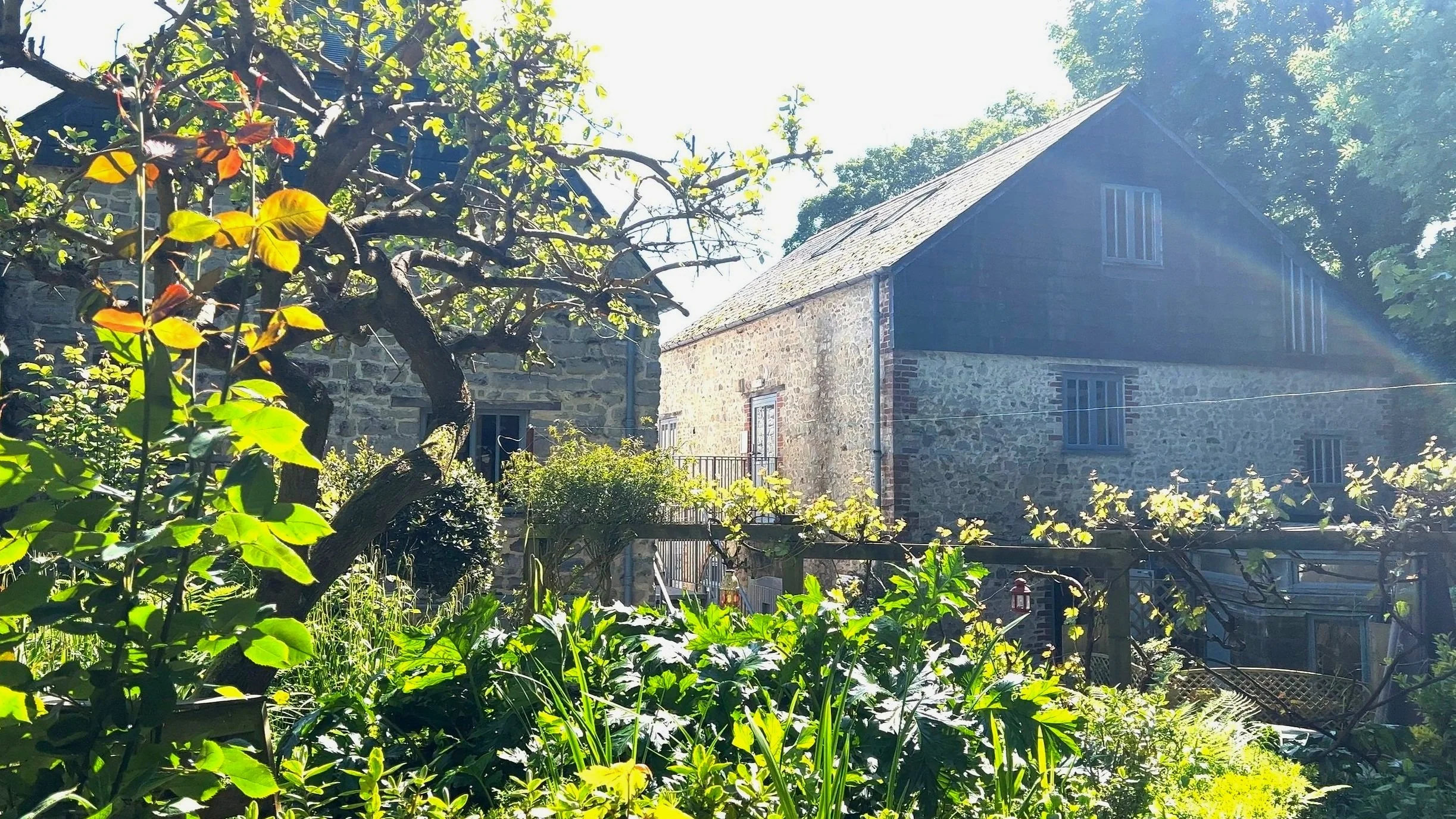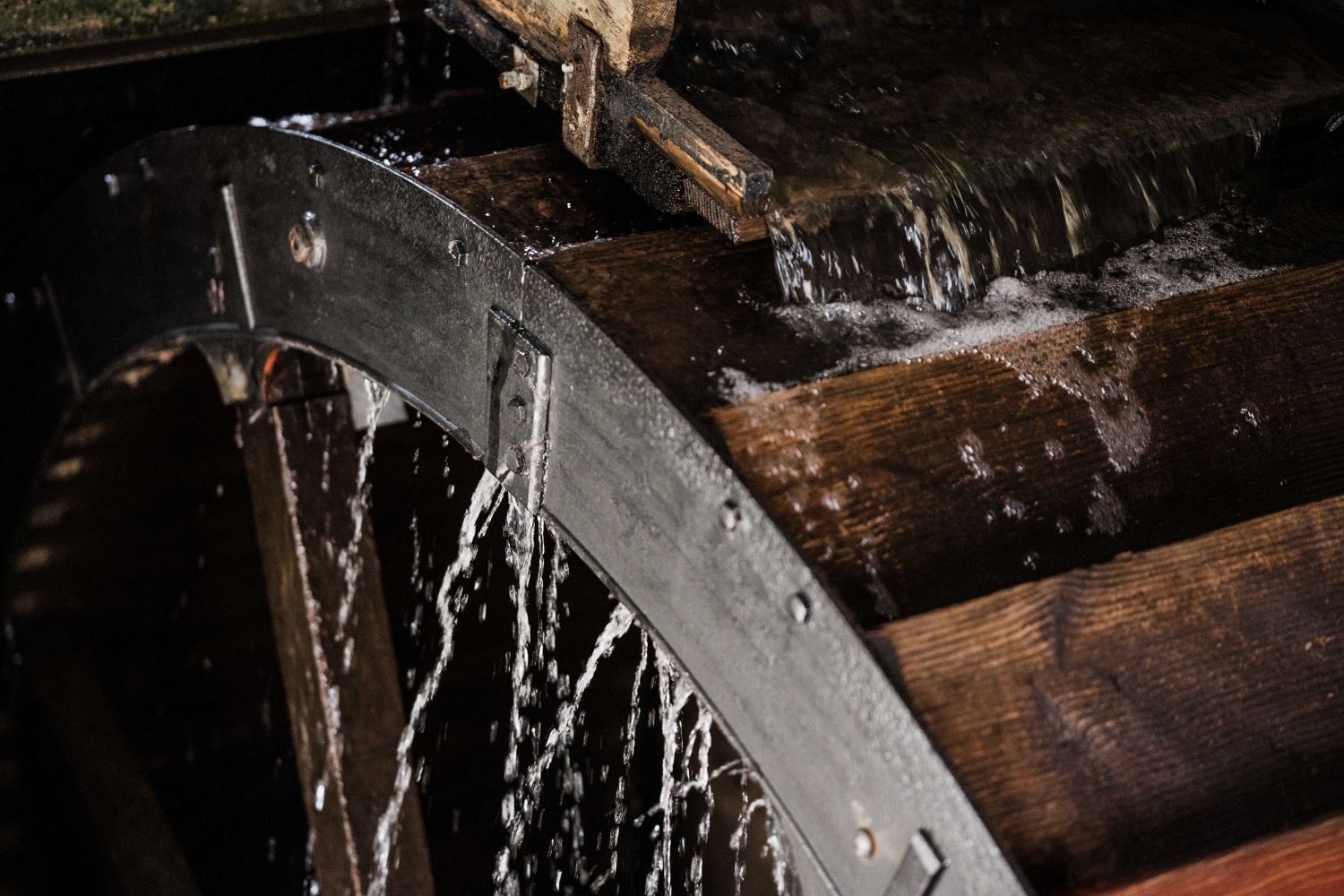
REACH BACK 700 YEARS IN TIME
The Town Mill is thought to be one of 5,000 pre-Domesday mills, and has a long history of serving Lyme Regis by milling wheat for bread, and malt for beer. The present site dates back to at least 1340, when Edward III granted a licence to The Town Mill. During the English Civil War in 1644 the mill was severely damaged. It was rebuilt within four years, and most of the buildings you see today date from this time.
From the 1850s onwards, the Town Mill struggled. Cheap imported grain and improved roller-milling technology put its finances under pressure, and it eventually closed in 1926.
The site began new life in 1929 as a borough council-owned depot and store, and sadly, in 1936 the Victorian iron waterwheel was removed. Over the years, the buildings were left to become derelict, and eventually, ownership was transferred to West Dorset District Council, who announced plans to demolish the site. It was to be many years before The Town Mill was saved from dereliction by a group of concerned and dedicated volunteers.
Restoration of the Mill
In 1991 the local district council announced plans to demolish the Mill. A thousand years of milling history was about to come to an end.
But a group of local residents quickly came together to oppose the council’s plans. They formed the Town Mill Trust and raised over £500,000 to finance this brave undertaking, and get the wheels turning once again. First came the outbuildings, restored as a café, galleries and artisan workshops. Then the structure of The Town Mill itself was brought back to life. Bit by bit the machinery was refurbished and in 1997 a salvaged waterwheel was hoisted into place.
On 26th May 2001, after a lengthy project and a massive community effort, the novelist John Fowles formally opened the restored Town Mill to the public and flour was milled for the first time in seventy-five years. Today, the story of the restoration is recounted by the working volunteer millers to all who visit and gives us a sense of our shared heritage.
The Malthouse had long been part of the milling scene at The Town Mill, and produced malt until around 1830. Then the building was sold and used for generating electricity.
Following grant funding and generous individual contributions, the Town Mill Trust was able to purchase the disused Malthouse. It was restored as a gallery and community space and reinstated as part of The Town Mill complex in 2010.
Today’s mill is a result of what a group of concerned and dedicated volunteers can do when they join together to preserve and enhance something special in their community, and open it up to the wider world.
The Milling Process
Town Mill artisan wholemeal flour is unique in more ways than one. Milled on-site, each batch of grain is carefully processed by one of our volunteer millers, who has been trained to follow a traditional stoneground milling method.
You can purchase our delicious flour in the Town Mill shop, as well as a range of baking kits and gifts. Whichever bag of flour you choose to buy, you can be sure that your purchase directly benefits our charitable trust, which keeps the historic Town Mill running and open for visitors to enjoy.
The Town Mill Flour product range currently includes:
Wheat, currently using strong, organic Yeoman heritage grain grown in the UK at Green Acres Farm.
Rye, also from cereal organically grown and supplied to us by Priors in Cambridge, UK.
Spelt, this ancient, heritage grain is organically grown in the UK and supplied to us by Craggs Farm Co Durham, UK.
Miller’s Garden
The Miller’s garden is a tranquil space, designed to use plants that would have been available to the miller and his wife in an earlier century. The plan creates four raised beds around a small mulberry tree, divided by gravel paths. The four beds have been planned as four distinct areas, one dedicated to herbs, one to fruit and flowers, one to vegetables, and the last area is a physic plot.
An arbour is being created around the bench to form an area of green shade and fruit trees run along the high wall between the garden and the mill leat footpath. Work on the garden started in 2000, clearing rubbish and controlling the ground elder that had overrun the garden. This was followed by the construction of the raised beds with willow edging and planting, and the addition of sculptures and land art.
The garden is managed by a team of volunteers. We always welcome new plants – if you have a plant contribution or would like to join the gardening team, please do get in touch.

